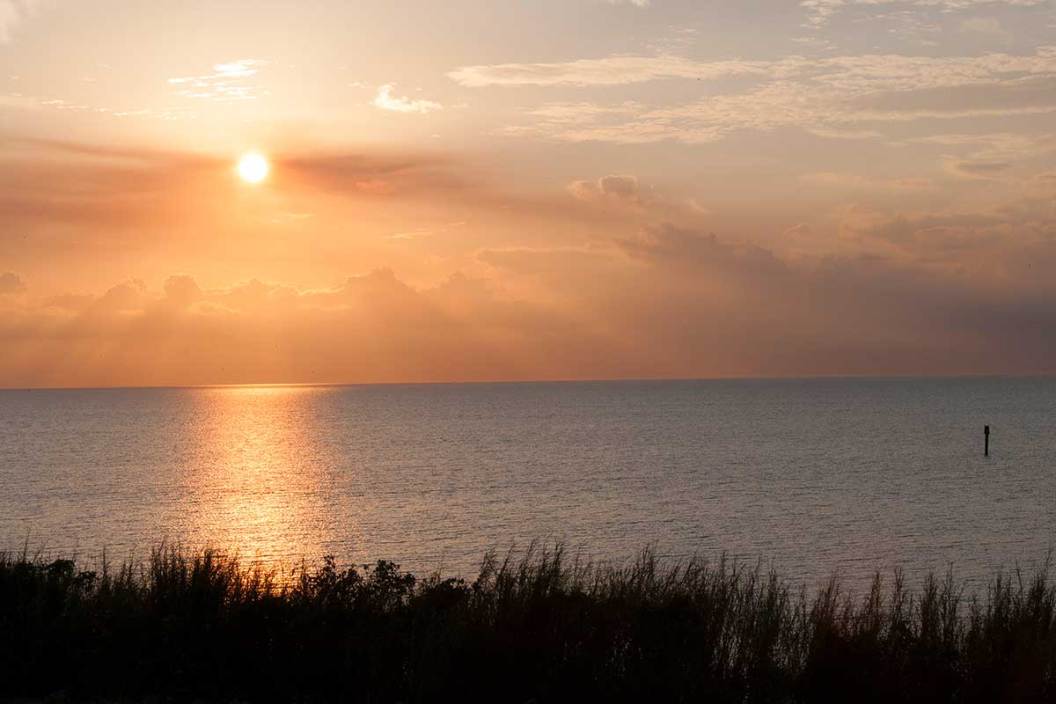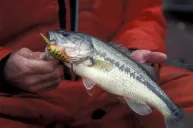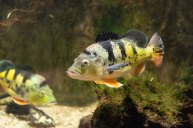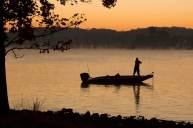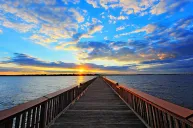Every fisherman needs a trip to Lake Okeechobee at some point in their lives.
The word Okeechobee roughly means "big water" in the Seminole Indian language, but for bass fishing enthusiasts around the nation it means big largemouth bass and lots of them.
Also known as the Inland Sea and more appropriately the Big O, Lake Okeechobee is roughly about half the size of the state of Rhode Island but averages only around nine feet deep.
Lake Okeechobee is the largest freshwater lake in Florida and the eighth largest in the country by area. This mammoth freshwater lake is also home to some 28,000 alligators.
Okeechobee is one of the most famous fishing lakes in the United States, and its reputation is well deserved so get ready to know her a little better. Let's take a look at some of the big lake's history, how to travel and fish there, and the abundant wildlife that lives there.
A Short History of the Big O
According to the South Florida Water Management District, "Geologists estimate that Lake Okeechobee was formed 6,000 years ago when ocean waters receded and water was left in a shallow depression that became the lake bed."
The Big O first came into the national consciousness when early American armed forces battled the Seminole Indians on Christmas Day, 1837. It was in 1881 that millionaire Hamilton Disston procured an incredible four-million acres of land, including the entirety of Lake Okeechobee, to encourage farming and build communities around the big lake.
In both 1926 and again in 1928, catastrophic hurricanes killed thousands of residents and did so much damage to the area that the federal government stepped in to create water control structures that still exist today.
Lake Okeechobee provides a natural freshwater habitat for fish, wading birds, and other wildlife, and it supplies essential water for people and its wetlands. It's at the center of the Greater Everglades watershed, which runs from the Kissimmee River through the Everglades and finally into Florida Bay.
Fishing on Lake Okeechobee
Before we get to the most obvious species of fish that resides in the lake, let's review a few of the fish species that call Okeechobee home:
- Channel catfish
- Black crappie
- Bluegill
- Redear sunfish
- Spotted sunfish
- Warmouth
- Bowfin
- Chain Pickerel
- Longnose gar
- Largemouth bass
Bass Fishing Lake Okeechobee
Of course, it is the amazing stories that we've all heard over the years about the Florida strain largemouth bass fishing in this South Florida lake that is so enticing.
The largemouth bass has seemingly always been a resident of Lake Okeechobee, and this species of fish seems to feel very at home in these waters. The average size largemouth bass in Okeechobee is almost eight pounds, with the lake record being well over 15.
Bass in Okeechobee prey on nearly everything: wild shiners and panfish, salamanders, frogs, and even baby gators. In fact, anything in its sight (including birds!) can be a target of this predatory fish, and Lake Okeechobee provides all the prey a bass needs.
It's the weed beds, mats, and pockets that provide an angler's dream on Okeechobee; the 730-square-mile lake seems to have nothing but the best kind of largemouth cover.
Many guides and locals will tell you that the best possible method is to fish with live local shiners under a dock or some sort of structure to catch not only the most, but the biggest bass in the lake. On top of that, this lake has been the starting point for so many types of soft plastic, topwater, and spinnerbait fishing techniques that it's hard to count them all.
Tournament fishing on the Big O is the thing of bass fishing lore, with every one of the biggest players in the genre participating: Bassmaster, Major League Fishing, Wal-Mart Bass Fishing League, Florida Bass Federation Nations, the Florida Bass Federation TBF, Bass Busters, Renegades Team Trail, Xtreme Bass Classic Championship, and nearly every state and local bass fishing club around holds events on this lake.
Lake Okeechobee Wildlife
Beyond the thousands and thousands of alligators that reside in the Big O, the lake is also home to many bird species such as Snail Kites, Purple Gallinules, the American Bald Eagle, and a number of wading birds. Apple snails found in the lake, the largest freshwater snail in North America, are a favorite food of the Snail Kite.
It is also the winter home of many different waterfowl species including mottled ducks, mallards, pintails, and teal, just to name a few. The burrowing owl, sandhill crane, crested caracara, and grasshopper sparrow can be spotted here as well.
Many reptiles exist here as well including turtles and snakes, but unfortunately that includes recent sightings of the invasive Burmese python as they move north and west from the Everglades. Frogs and salamanders, already mentioned as bass bait, live here too.
Even bobcats can be seen on and around the shores of Okeechobee, along with rare, but not unusual sightings of the Florida panther.
Other Facts To Know
Lake Okeechobee is located between Fort Myers on the Gulf of Mexico side, and West Palm Beach on the east side of Florida, in roughly the center of the state. Lake levels are controlled by the Herbert Hoover Dike which was created by the U.S. Army Corps of Engineers.
Water level and flood control are a big part of creating a healthy ecosystem, and help residents of the area in countless ways.
Lake Okeechobee is famed for its fishing, but it is also known as a relaxing place to visit for anyone. With several cities in close proximity to the lake, it is easy to get to by plane and has many places to stay including campgrounds.
The nearest airport to Lake Okeechobee is the West Palm Beach Airport. Common places to visit nearby include Clewiston, Belle Glade, Pahokee, Port Mayaca, Moore Haven, and the town of Okeechobee on the north shore.
The Lake Okeechobee Scenic Trail is a 109-mile multi-use path around the Okeechobee waterway, which is open to visitors year round.
And if you are a serious bass fisherman, it is a bucket list trip like no other.
Products featured on Wide Open Spaces are independently selected by our writers and editors. However, when you buy something through our links, we may earn a commission.
Looking for a little more or even hot lunch for your hunting blind? Follow my webpage, or on Facebook and YouTube.
NEXT: 5 EAST COAST FISHING SPOTS THAT ARE CAN'T-MISS
